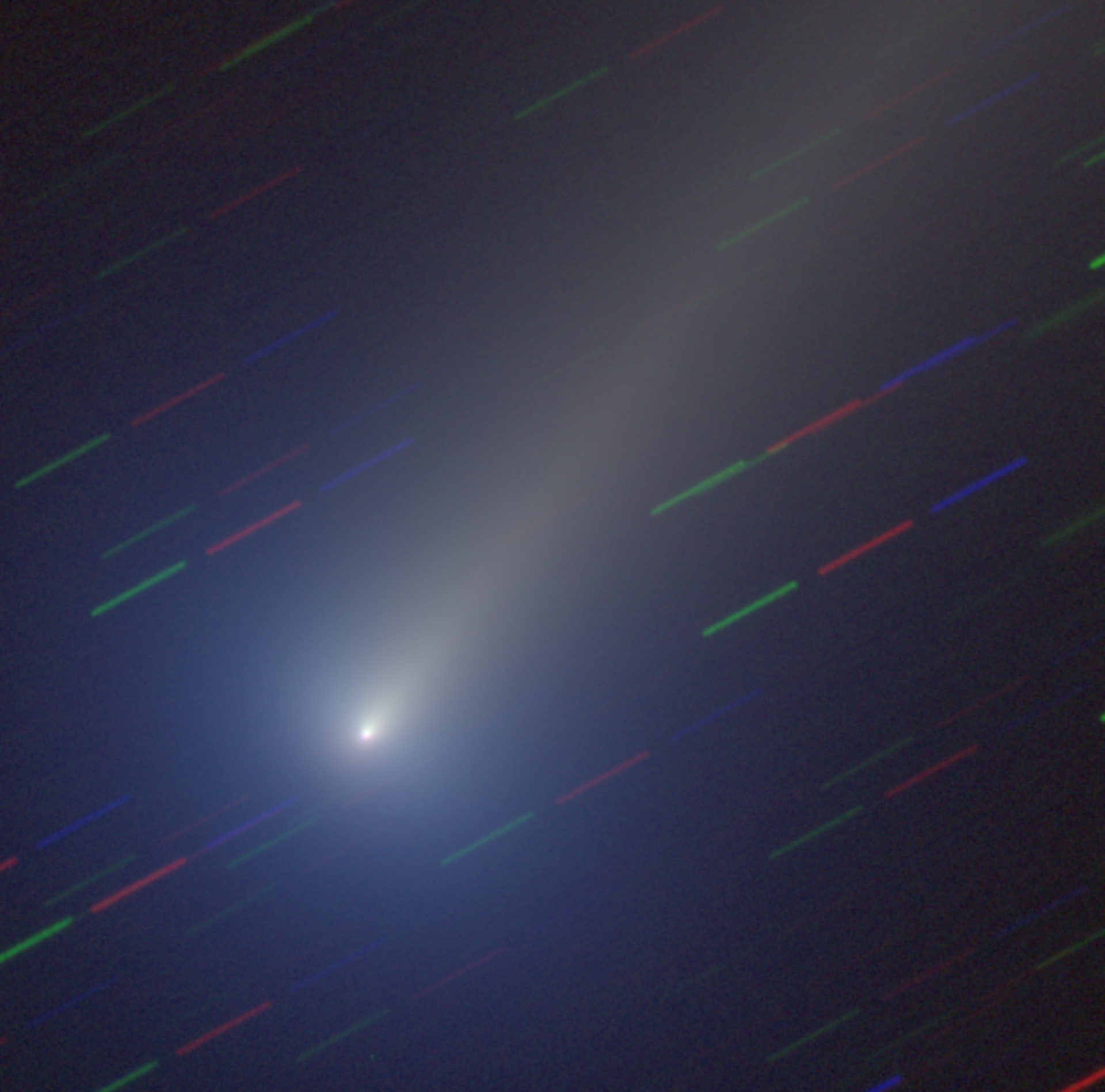Comet Leonard's discoverer shares tips to spot it in the night sky now (before it's gone for good)
Binoculars and a clear, dark sky with a good view of the horizon should do the trick.

The discoverer of Comet Leonard has shared a few tips to help see the bright object in the night sky this month.
Comet Leonard, formally known as C/2021 A1, is named after Gregory Leonard, a senior research specialist at the University of Arizona's Lunar and Planetary Laboratory, who discovered the cosmic object in January 2021. It won't be near Earth again for another 80,000 years,
More than 21 million miles away (or 88 times the distance from Earth to the moon), Comet Leonard made its closest approach to Earth on Dec. 12. The comet's next flyby will be at Venus later this week, on Dec. 17 — the comet's last visit to Earth's neighborhood, before leaving the solar system forever, according to a statement from the University of Arizona.
Related: Spectacular comet views from Earth and space
"There is a small chance Venus will pass close enough to the comet's path where it may pick up some dust grains in its atmosphere, producing a meteor shower on our neighboring planet," Leonard said in the statement.
Currently, the comet can be seen low in the evening sky, just after sunset. Leonard shared some viewing tips to spot the comet in the night sky this week.
First, with Venus prominently visible in the southwestern sky, skywatchers can use the bright planet as a reference point to locate the comet, Leonard recommends.
Get the Space.com Newsletter
Breaking space news, the latest updates on rocket launches, skywatching events and more!

"Beginning Dec. 13, this comet will appear very low above the horizon just after sunset," Leonard said in the statement. "It will skim across the west-southwestern horizon between now up until around Christmastime. The fact that it's so close to the horizon makes this comet a bit challenging to observe."
However, as the comet travels closer to the sun, its tail and coma — the cloud of dust and gas that surrounds the comet — may scatter sunlight, making the comet appear brighter and possibly easier to spot.
"I feel there is going to be something to be seen even for the casual observer," Leonard said in the statement. "Find yourself a dark sky with a good view of the horizon, bring binoculars and I think you may be rewarded."

This will be the last chance skywatchers have to observe Comet Leonard up close before it is flung back out into the depths of space.
"This is the last time we are going to see the comet," Leonard said in the statement. "It's speeding along at escape velocity, 44 miles per second. After its slingshot around the sun, it will be ejected from our solar system, and it may stumble into another star system millions of years from now."
Follow Samantha Mathewson @Sam_Ashley13. Follow us on Twitter @Spacedotcom and on Facebook.
Join our Space Forums to keep talking space on the latest missions, night sky and more! And if you have a news tip, correction or comment, let us know at: community@space.com.

Samantha Mathewson joined Space.com as an intern in the summer of 2016. She received a B.A. in Journalism and Environmental Science at the University of New Haven, in Connecticut. Previously, her work has been published in Nature World News. When not writing or reading about science, Samantha enjoys traveling to new places and taking photos! You can follow her on Twitter @Sam_Ashley13.









